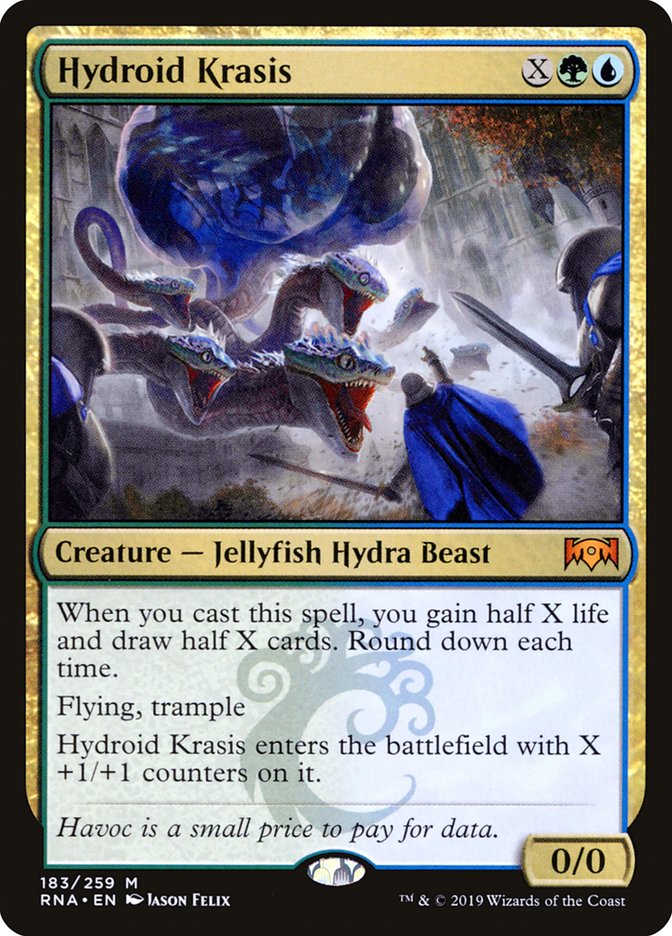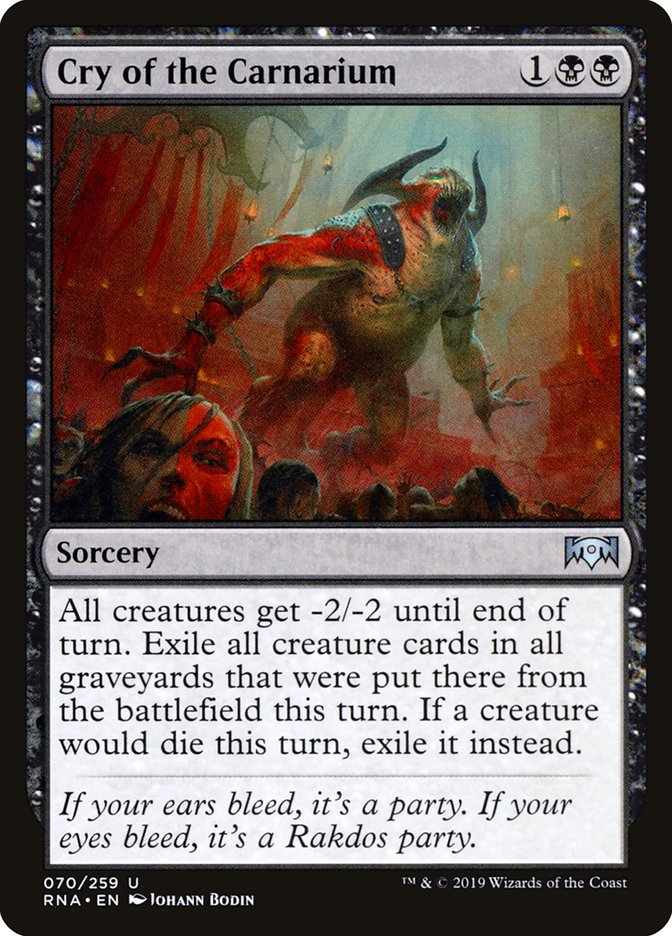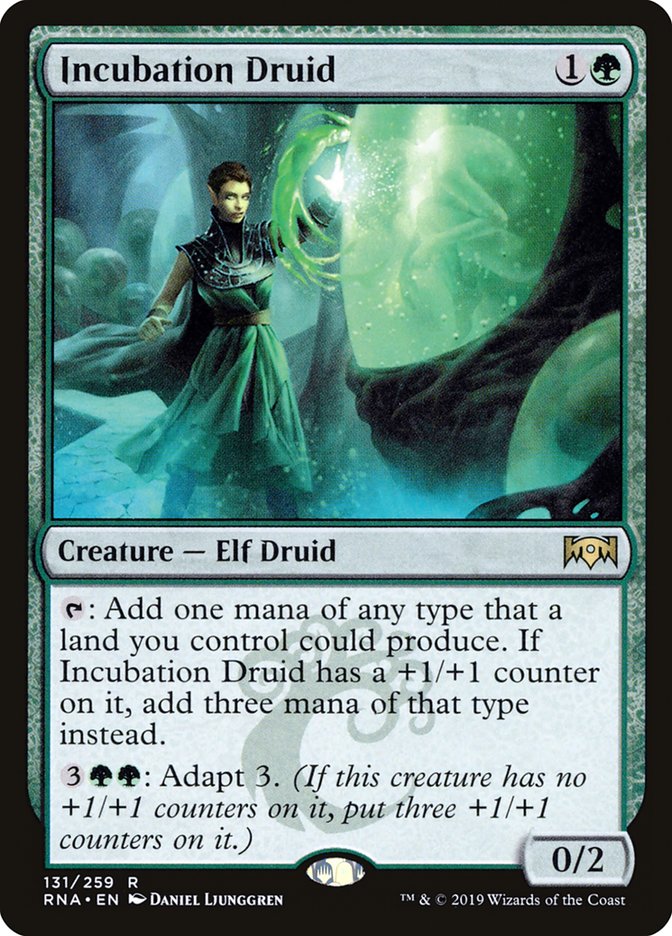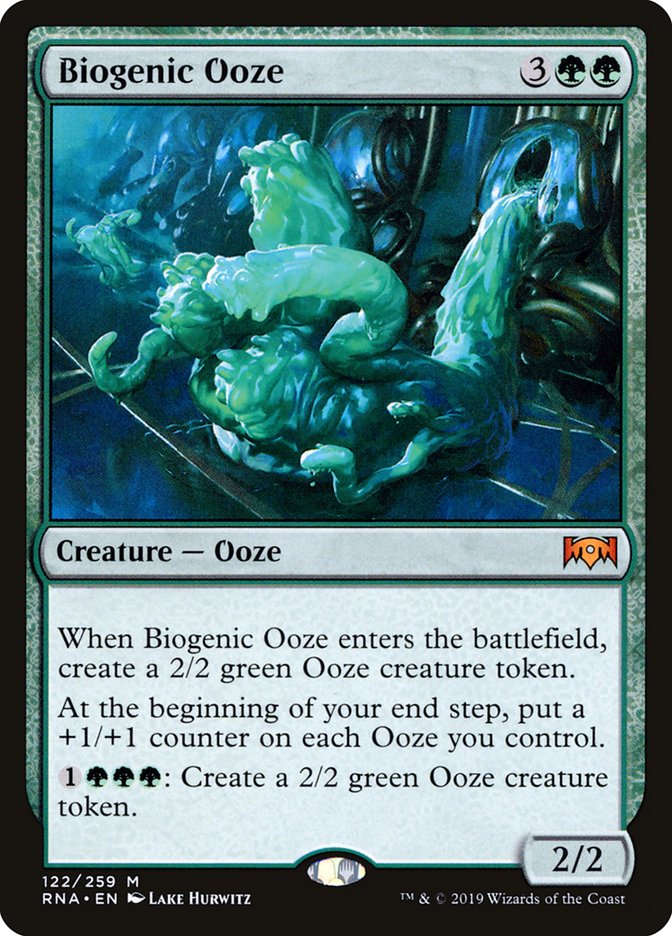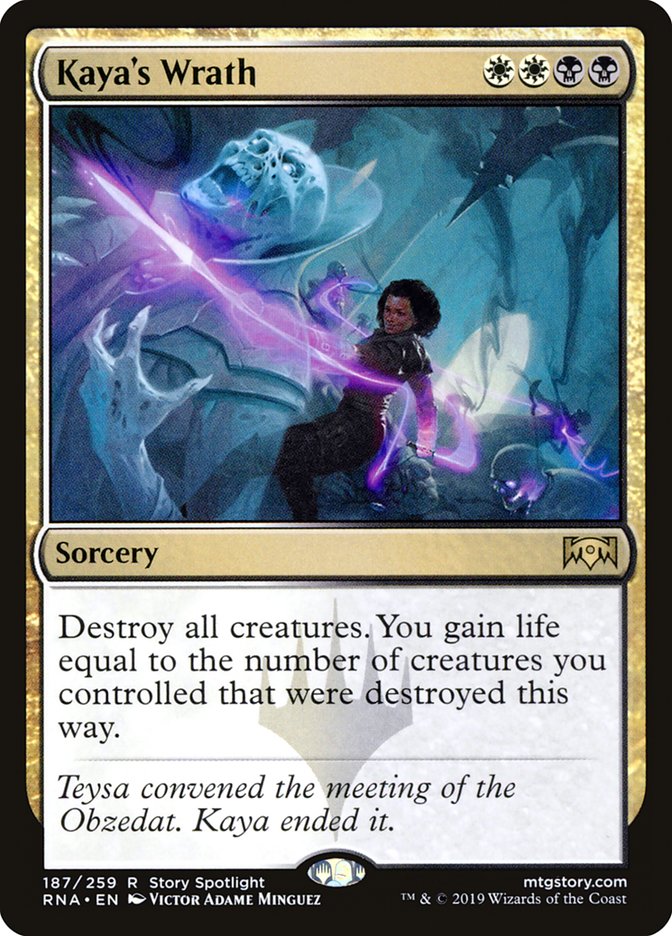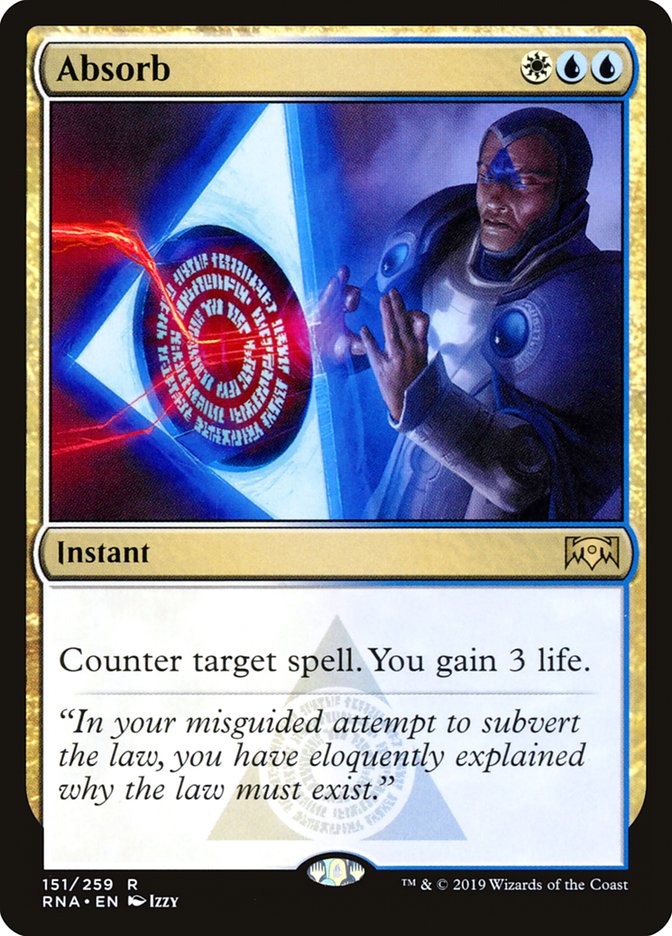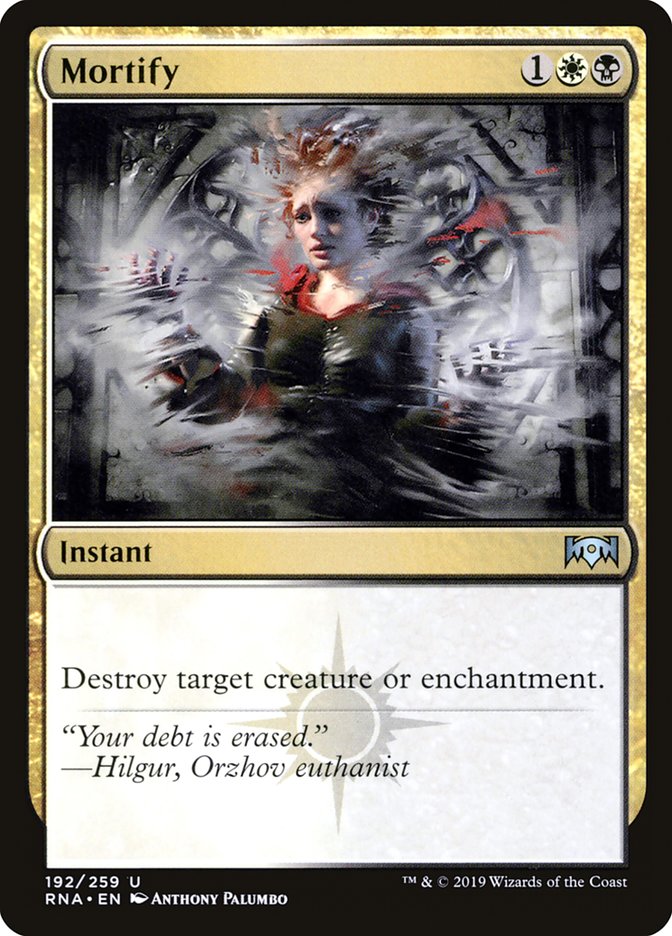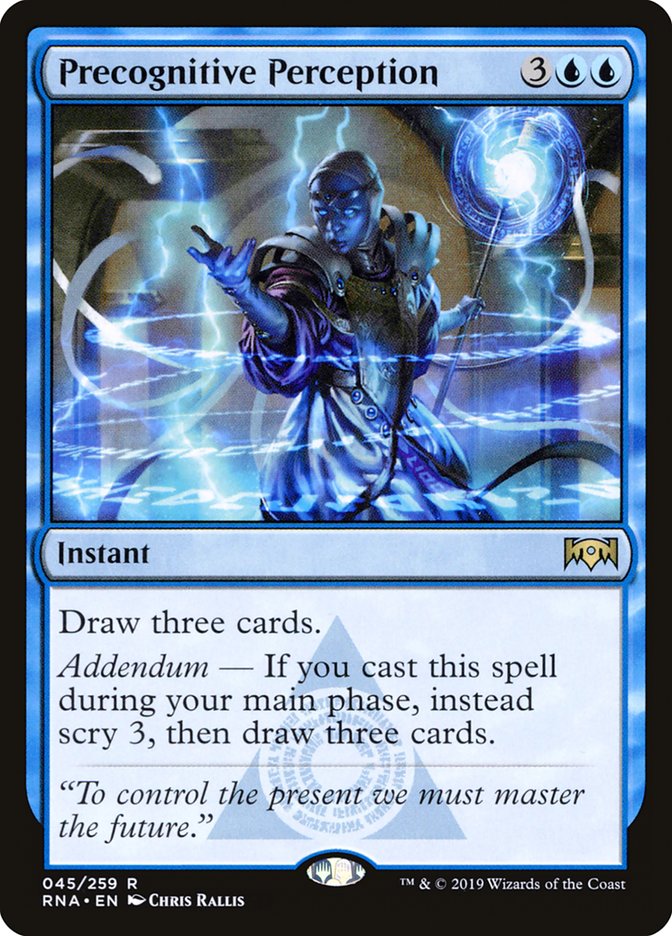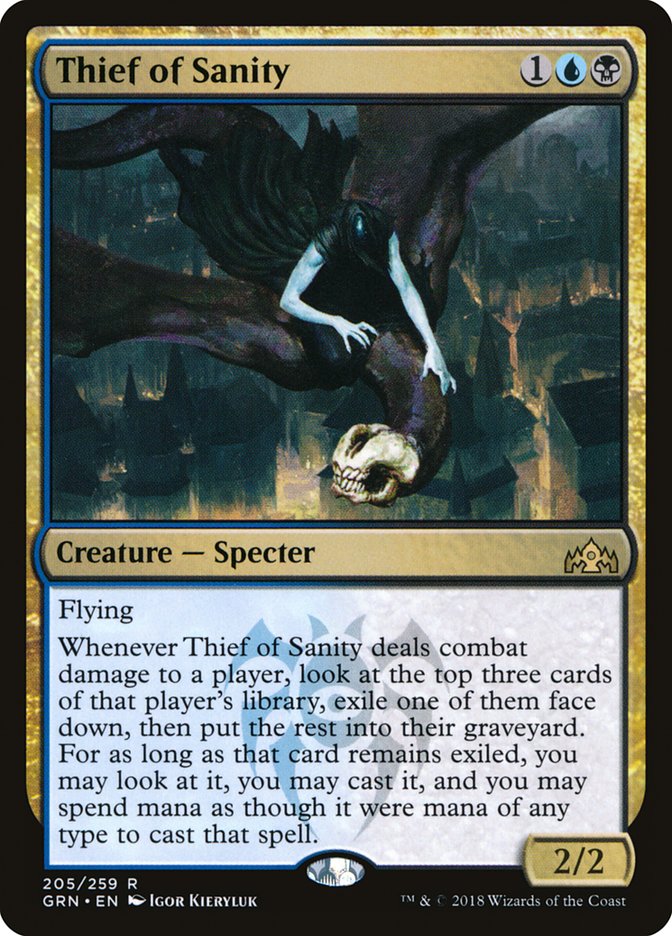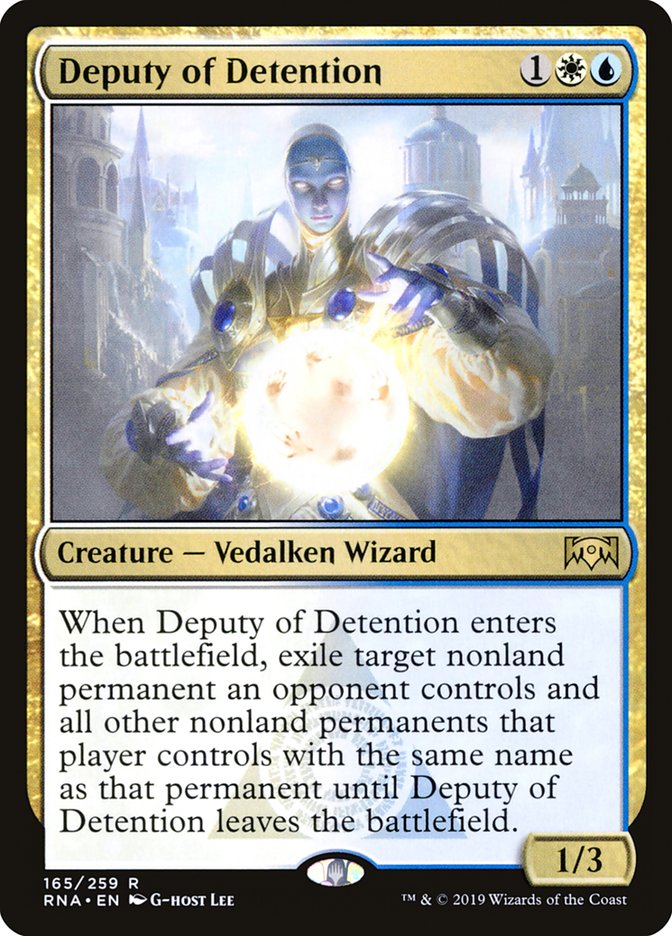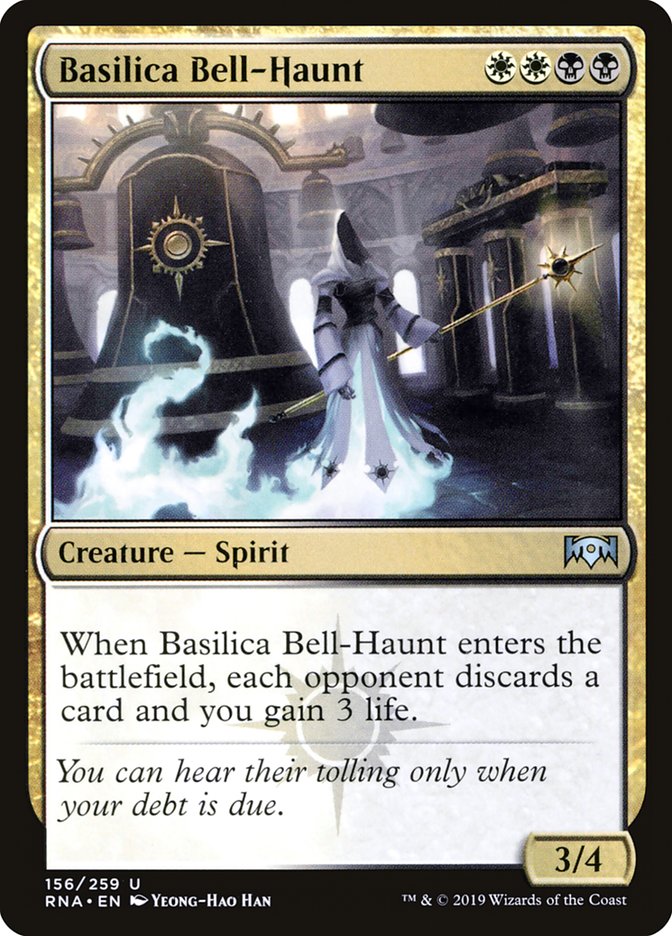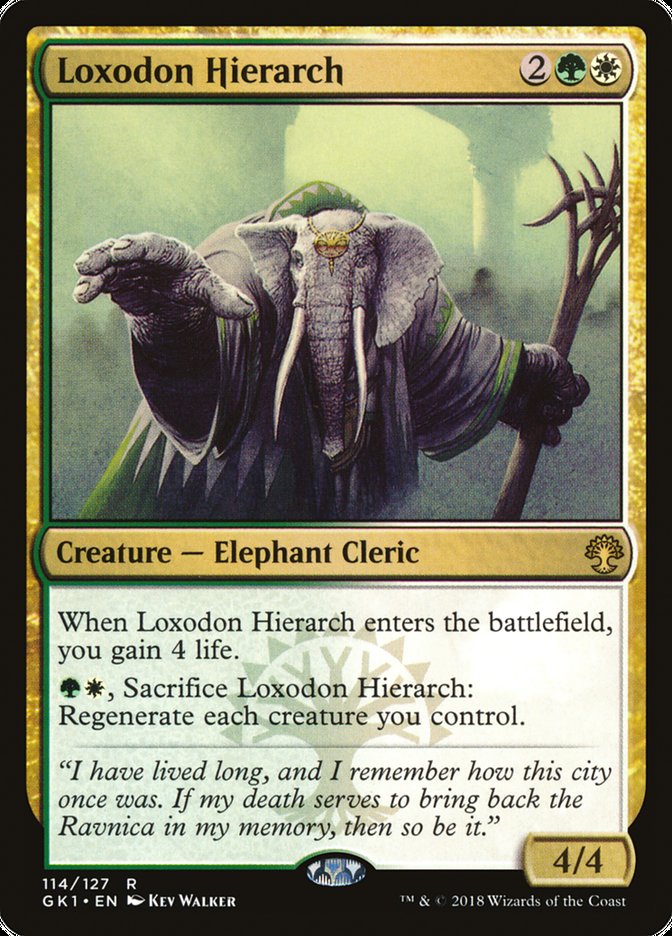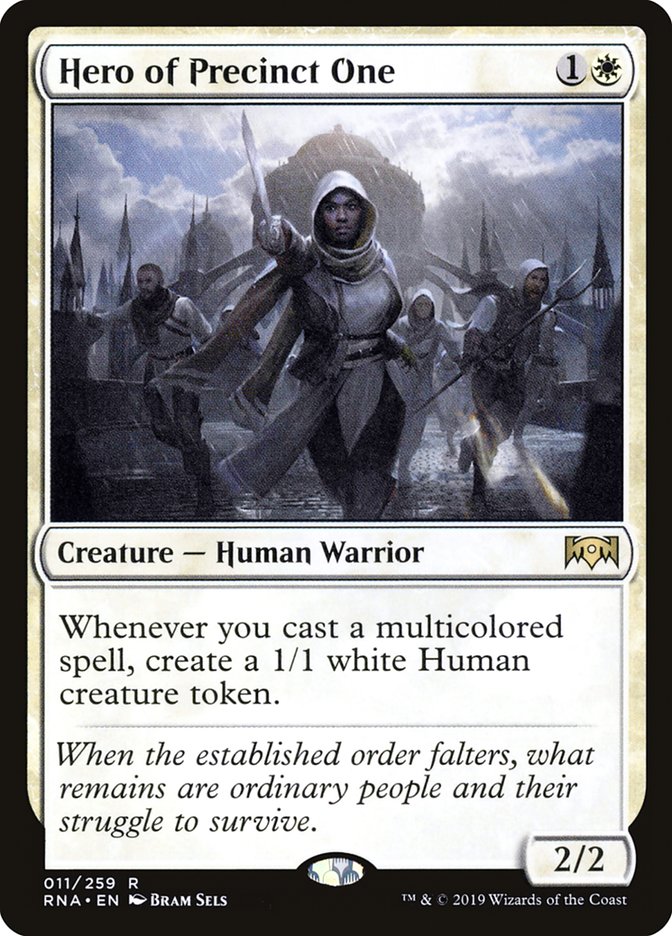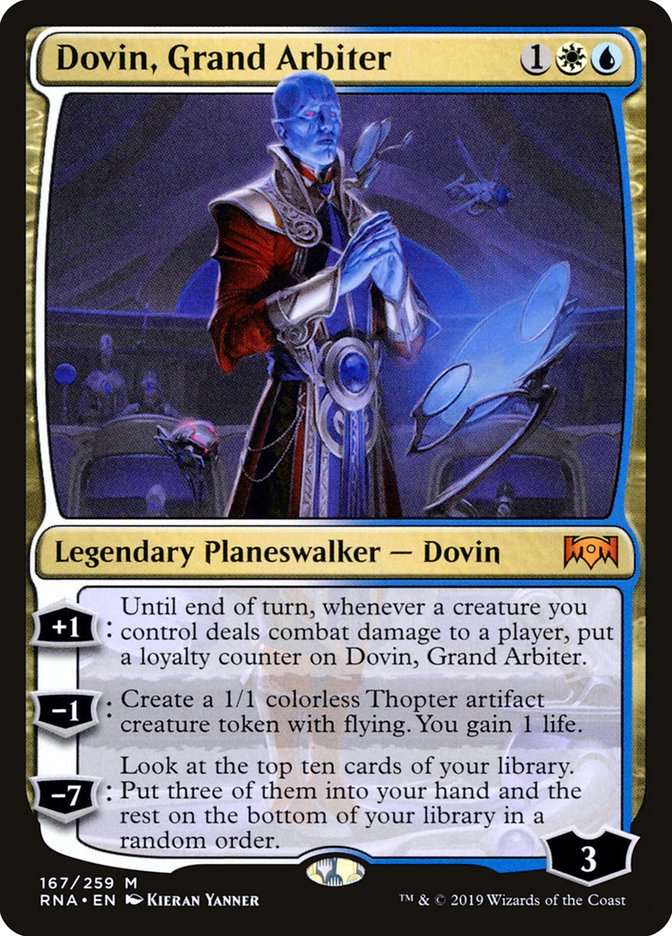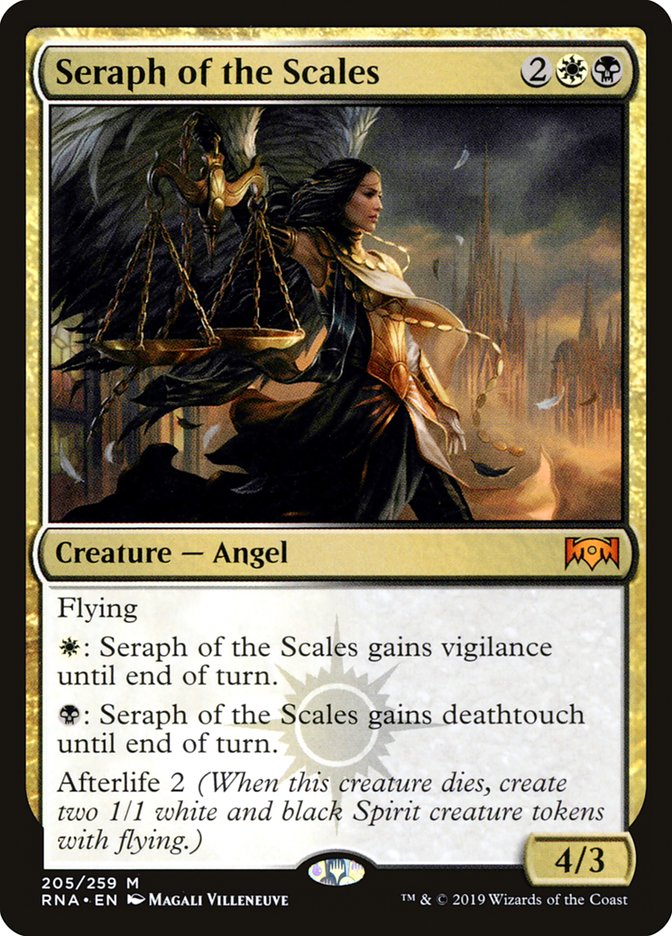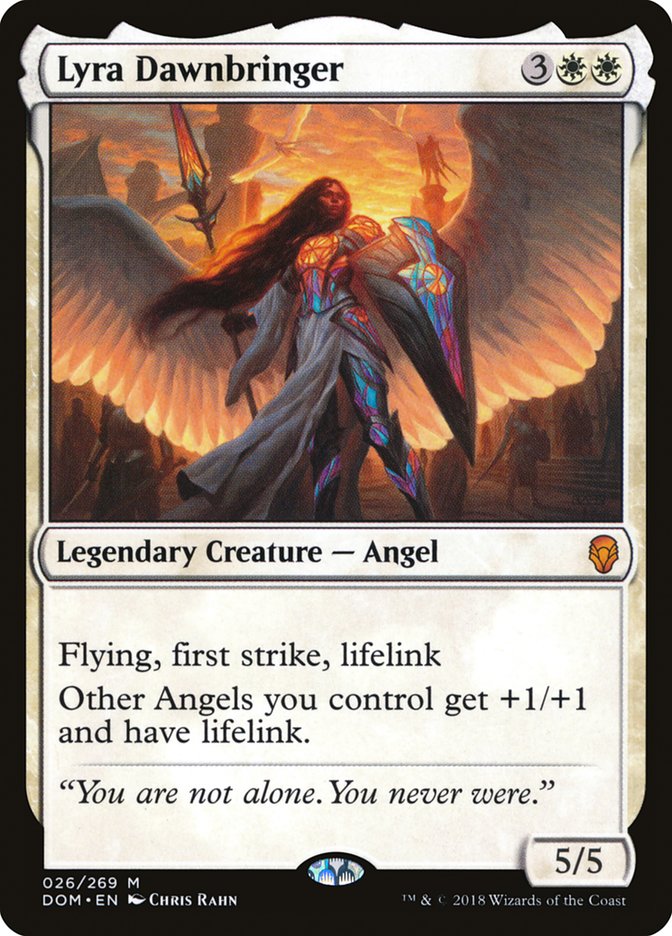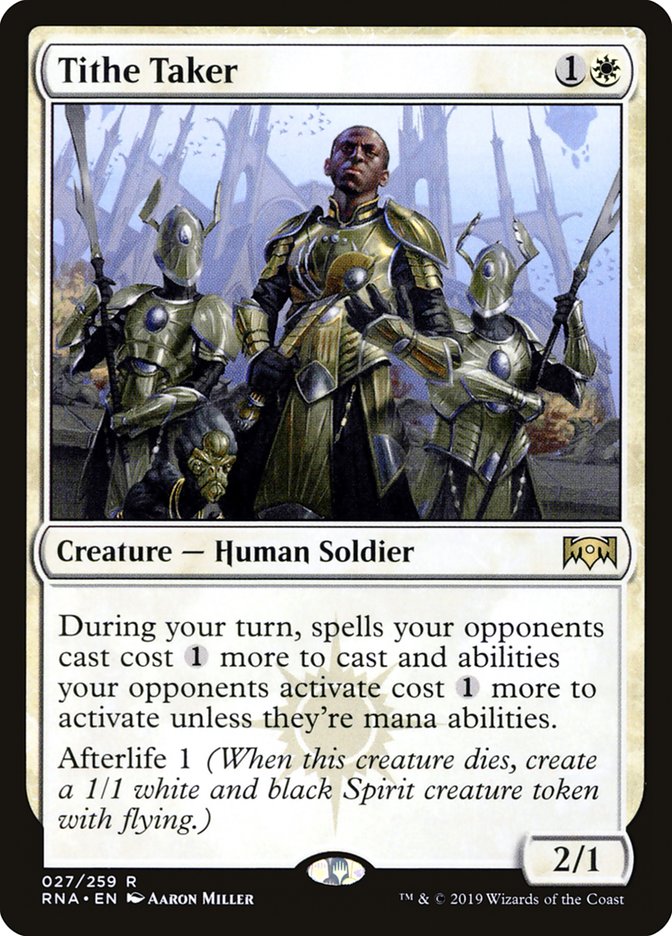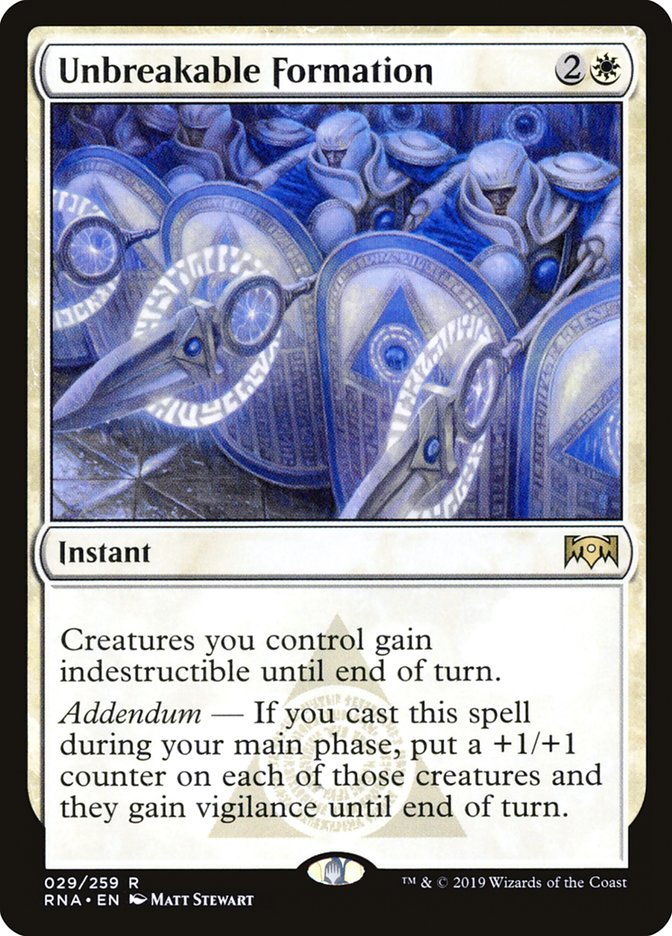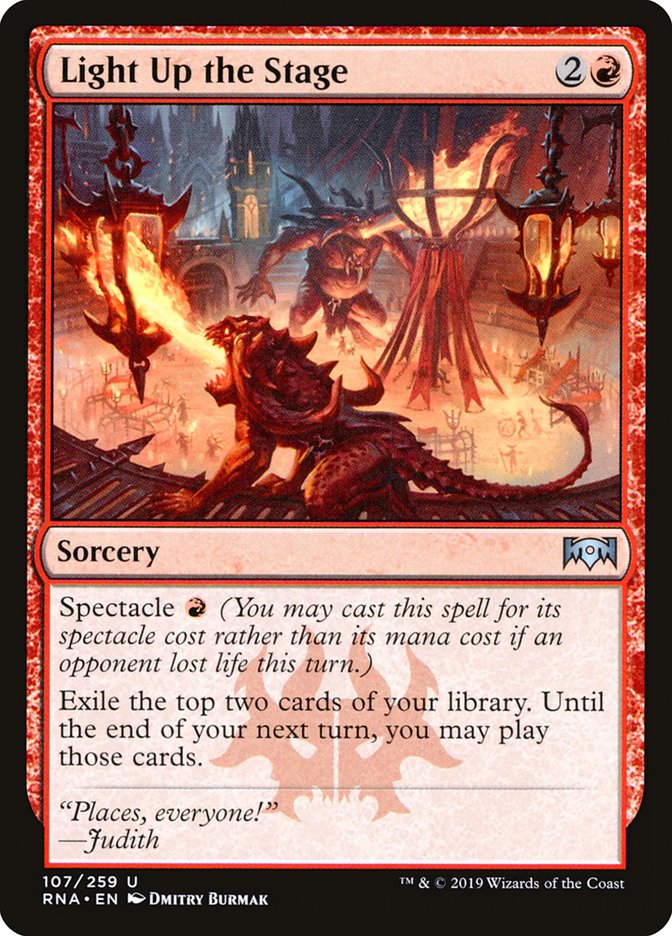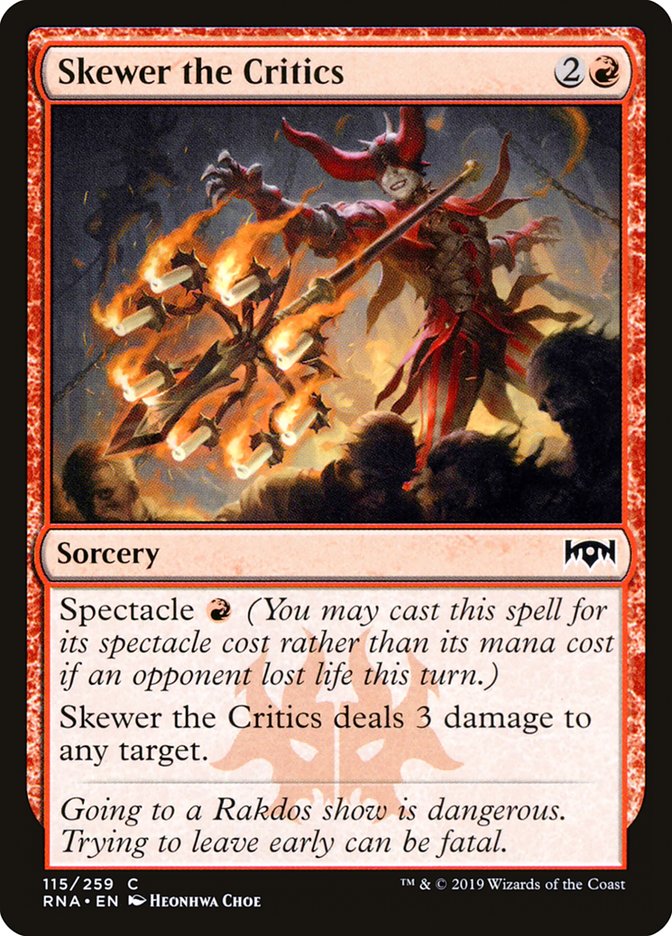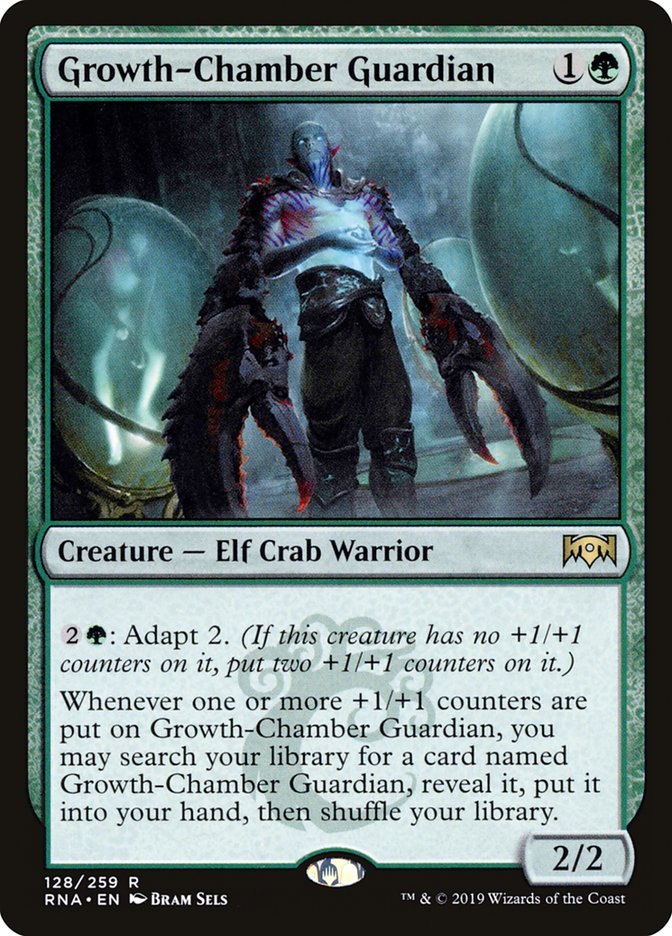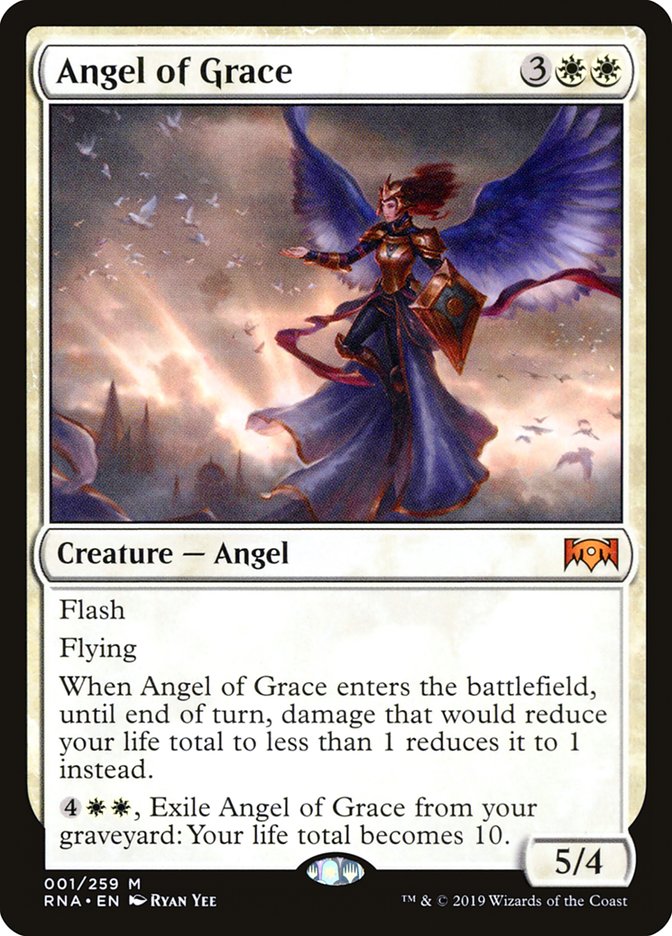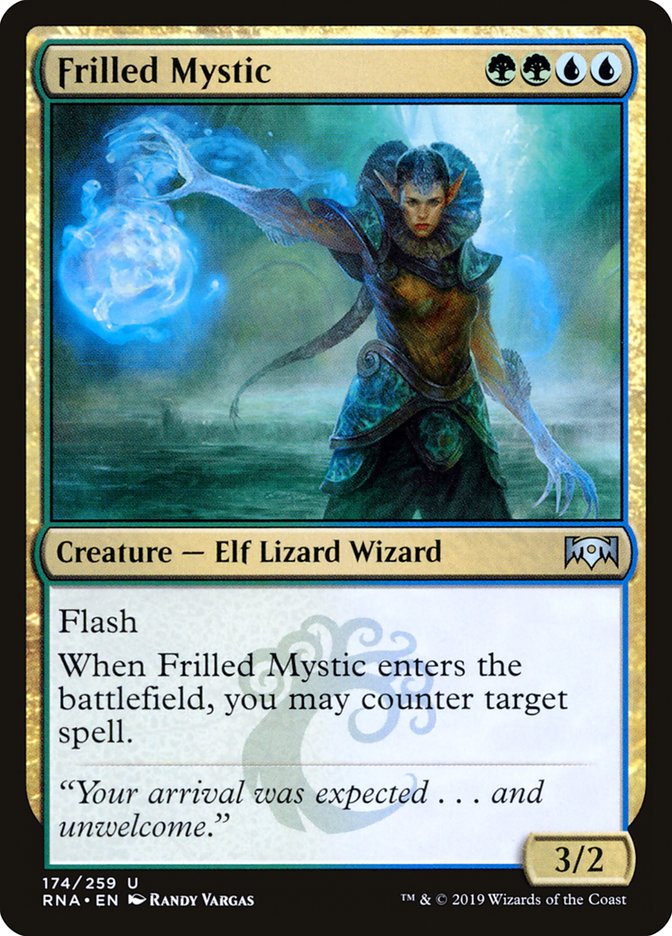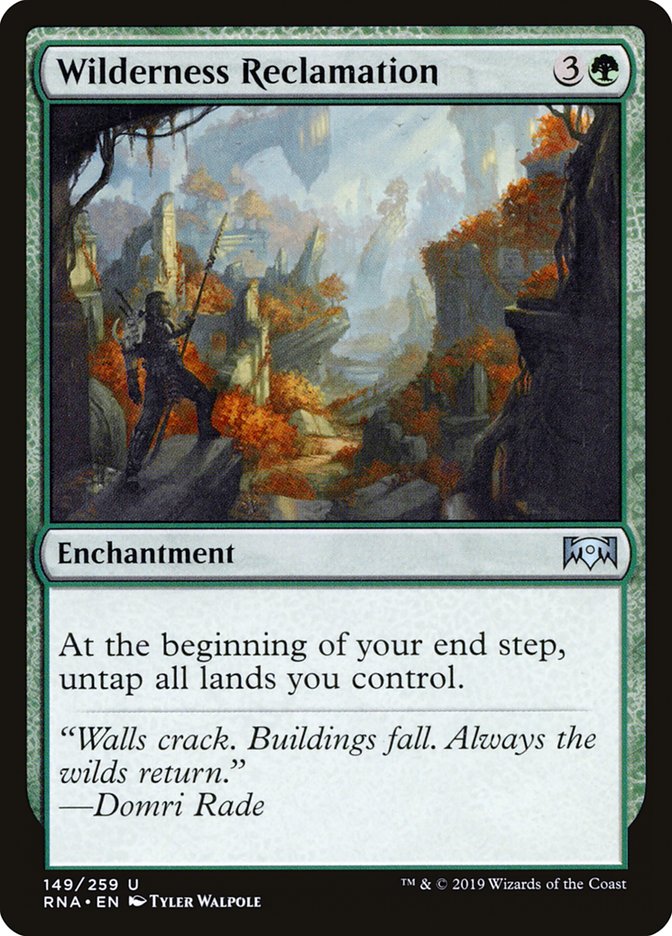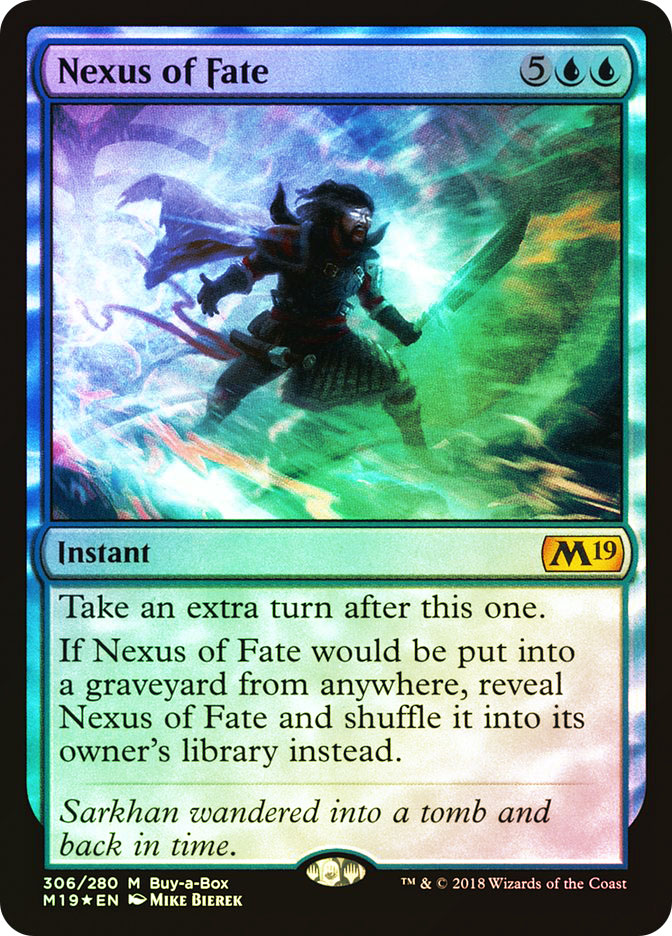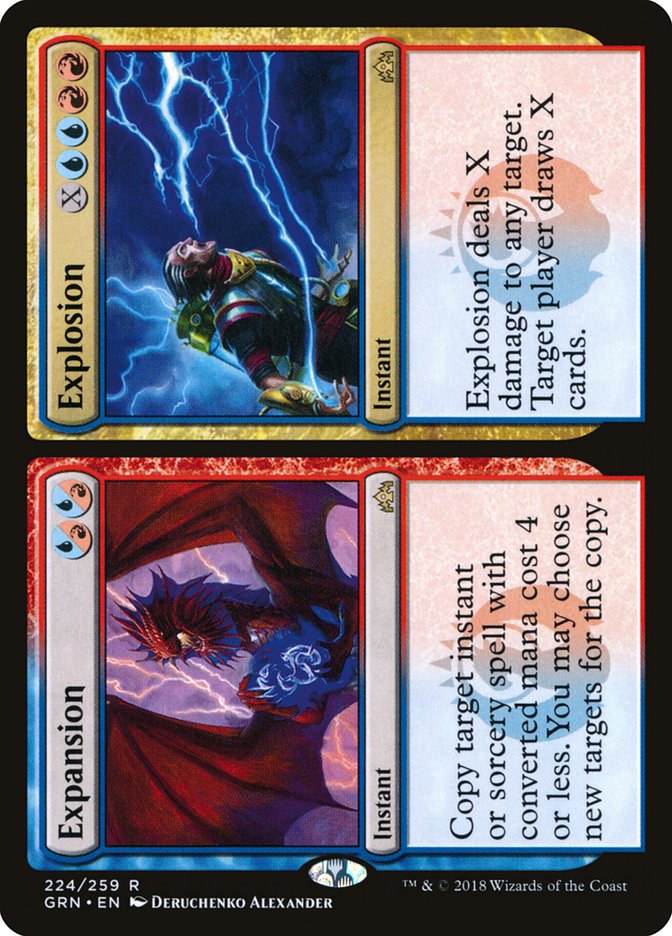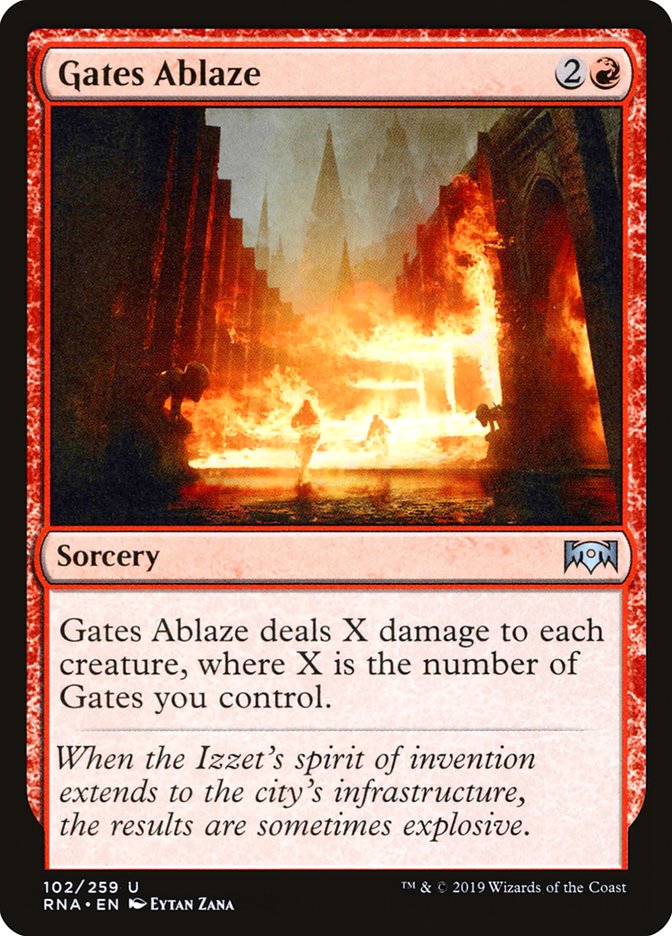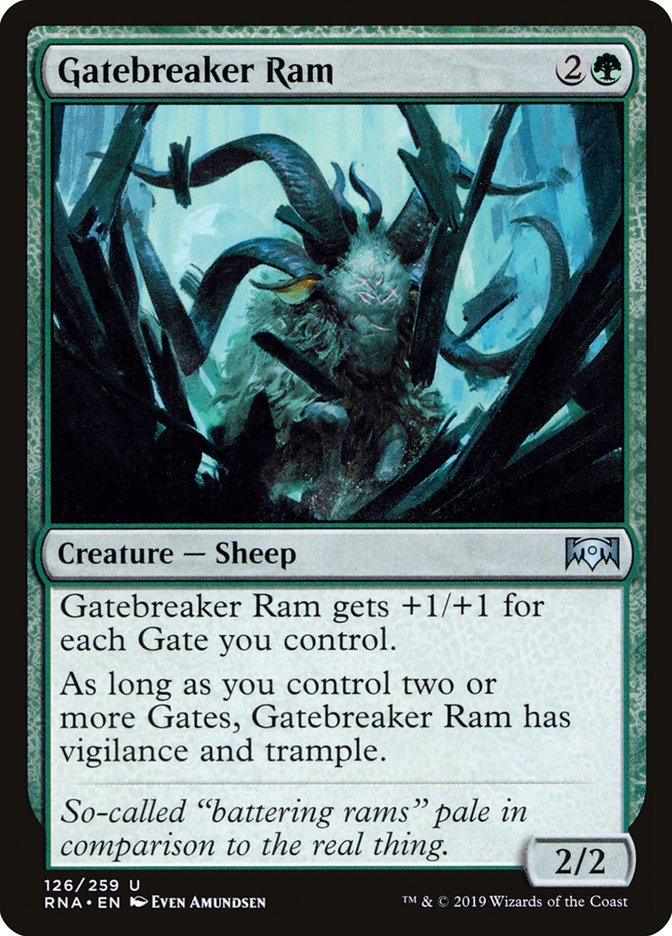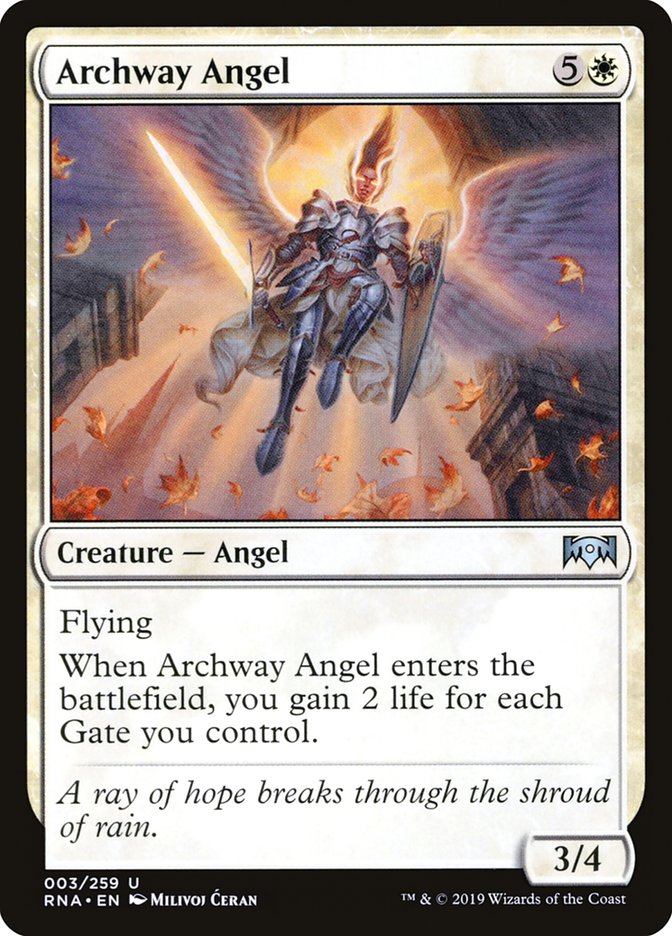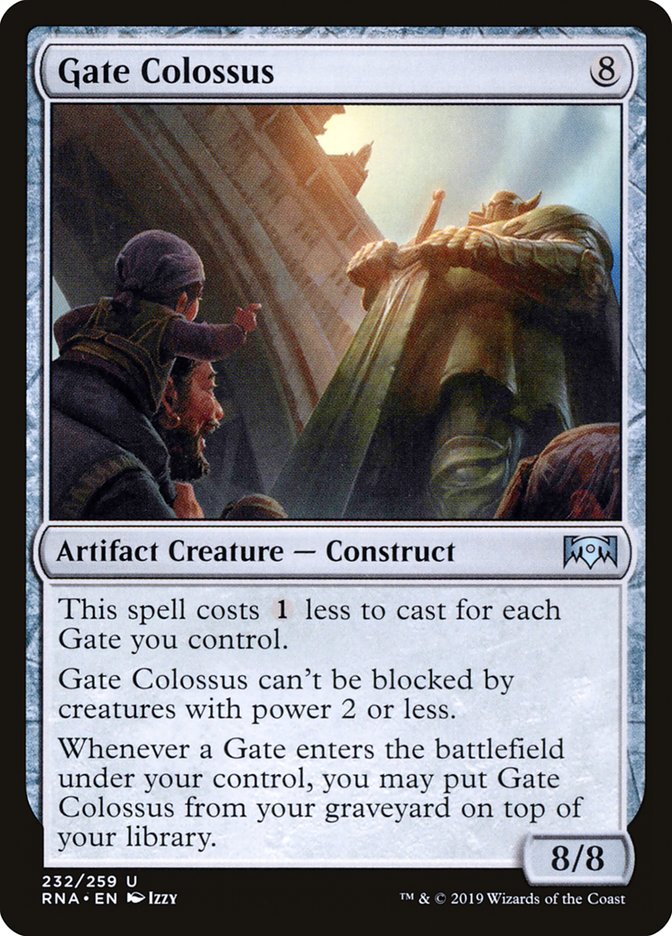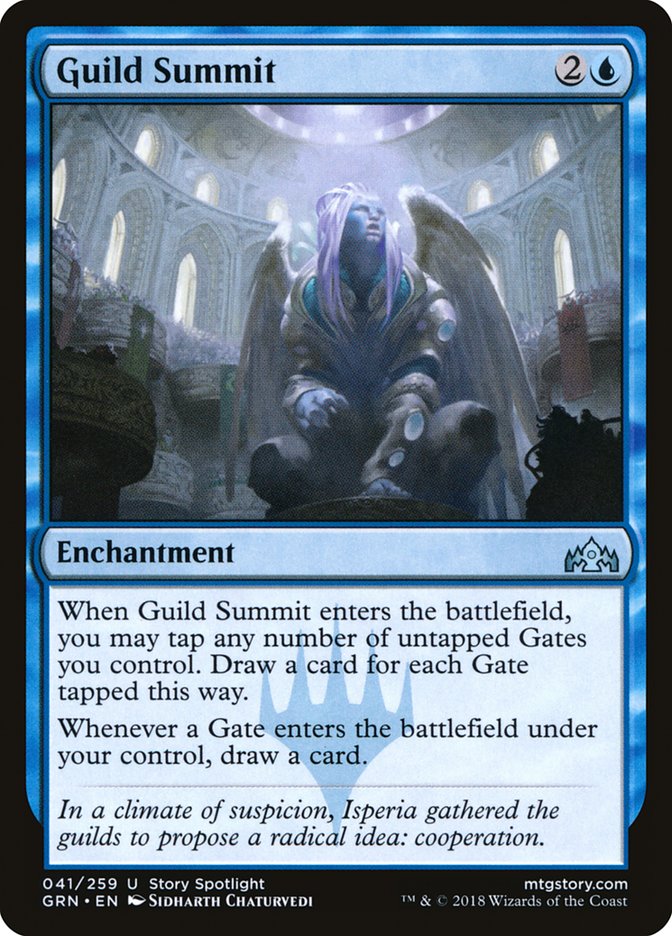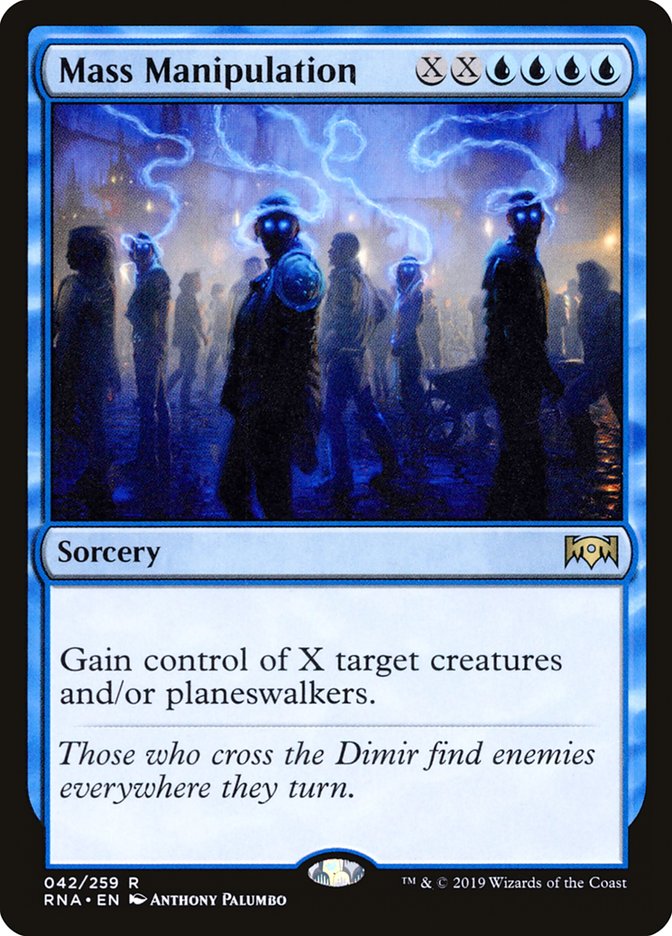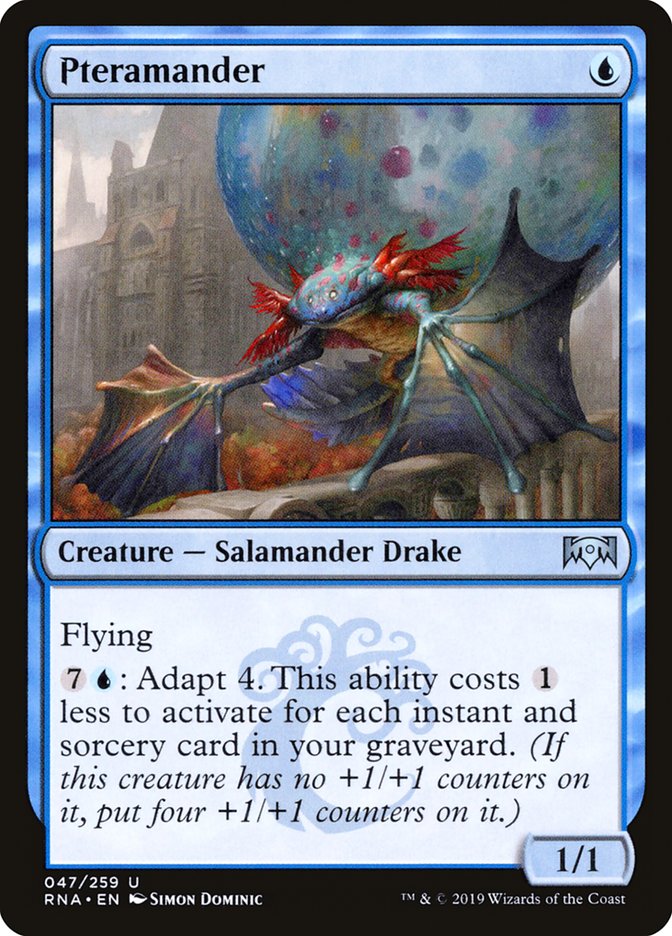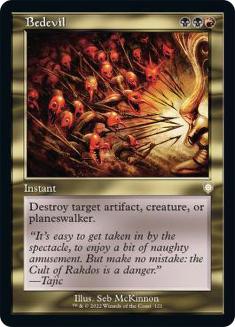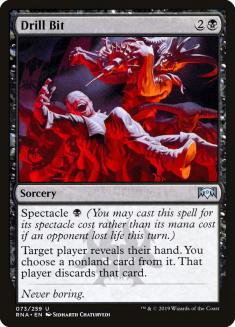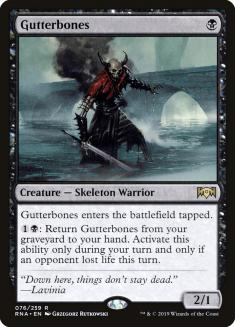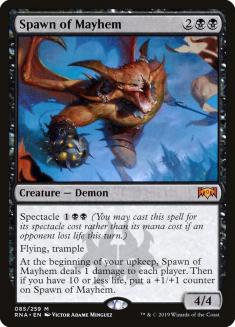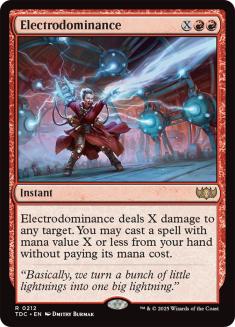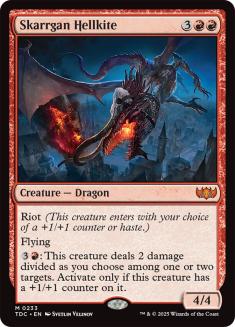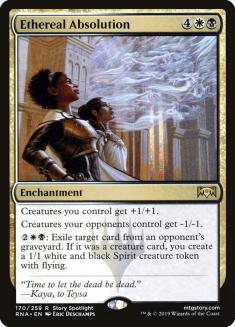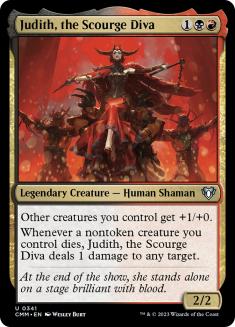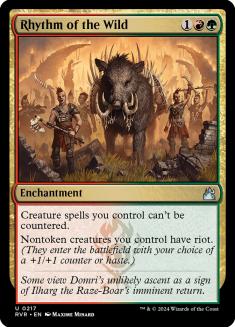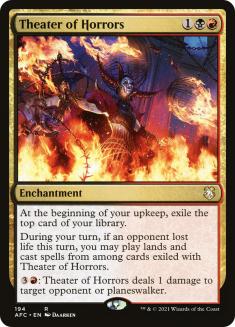Ravnica Allegiance was let loose on the world this weekend, and it wasted no time reshaping the Standard landscape. While the five remaining shocklands certainly delivered in their promise to really open up three-color decks, there were also some pretty hard-hitting spells that appear to have changed the format’s rules of engagement.
The most impactful of them all so far has been Hydroid Krasis.
Hydroid Krasis found a number of homes (practically any deck running blue and green), but none so popular as Sultai midrange, the archetype Anthony DeVarti piloted to a Week 1 victory in Indianapolis.
Golgari built around Jadelight Ranger, Merfolk Branchwalker, Wildgrowth Walker, Llanowar Elves, Carnage Tyrant, Vivien Reid, Find // Finality, and black removal was one of the biggest strategies of the previous format. The primary Ravnica Allegiance evolution of this strategy appears to be the addition of Hydroid Krasis.
Hydroid Krasis fits with the whole two-for-one theme, being a four-cost 2/2 flying creature that draws a card and gains a life. Where it really gets its money, however, is from the ability to scale up with whatever remaining mana you have available, keeping the card flow going. While it doesn’t scale anywhere close to as well as cards like Expansion // Explosion, the floor is much higher, since even the four-cost version is serviceable. Additionally, even if you “cycle” it early as a 2/2 flying creature that draws only a single card, Find // Finality can easily retrieve it later, when X equals a much larger number.
One important note on Hydroid Krasis: Its ability triggers merely from casting the creature, not entering the battlefield. Even if it were to be countered, you’d still get the trigger.
Creatures (26)
- 4 Llanowar Elves
- 2 Carnage Tyrant
- 4 Wildgrowth Walker
- 4 Merfolk Branchwalker
- 1 Seekers' Squire
- 4 Jadelight Ranger
- 2 Ravenous Chupacabra
- 2 Midnight Reaper
- 3 Hydroid Krasis
Planeswalkers (3)
Lands (24)
Spells (7)

Anthony’s sideboard contains another new tool from Ravnica Allegiance, Cry of the Carnarium.
Cry of the Carnarium is potentially an upgrade over Golden Demise, exiling recursive threats like Arclight Phoenix. It is not without some risk, however. Exiling our own creatures leaves us with fewer Find // Finality targets later. Besides, sometimes we’ll have the city’s blessing, right?
Sultai was the most popular archetype on Day 2 and also put a second copy in the Top 8. Abe Corrigan’s list was very similar to Anthony’s with only a couple of minor variations, like an Assassin’s Trophy instead of Cast Down and Hostage Taker instead of Midnight Reaper.
Creatures (25)
- 4 Llanowar Elves
- 2 Carnage Tyrant
- 1 Hostage Taker
- 4 Wildgrowth Walker
- 4 Merfolk Branchwalker
- 4 Jadelight Ranger
- 2 Ravenous Chupacabra
- 3 Hydroid Krasis
- 1 Incubation Druid
Planeswalkers (3)
Lands (24)
Spells (8)

Beyond Hydroid Krasis, Abe’s list also features a single copy of Incubation Druid, a small upgrade over Druid of the Cowl or Seekers’ Squire.
Incubation Druid may not have quite so much toughness, but it does make black mana and it can be adapted into a legitimate threat that also opens up huge mana turns for extra-large Krasen.
Biogenic Ooze provides extremely powerful threat for punishing removal-light opponents, as it can sort of function as a slower Pack Rat, but one that doesn’t require discarding any cards.
While Sultai was definitely the most popular Day 2 archetype at 20.5%, it was also one of the best-performing, increasing its share to 27.5% of the Top 64 metagame, weighted by finish.
|
Archetypes |
Day 2 Metagame |
Top 64 Metagame |
|
Sultai Midrange |
20.5% |
27.5% |
|
Esper |
13.2% |
18.3% |
|
Mono-Red Aggro |
19.2% |
15.7% |
|
Bant Midrange |
4.4% |
14.4% |
|
W/X Aggro |
4.4% |
7.2% |
|
Izzet |
8.9% |
7.2% |
|
U/G/X Climb |
13.2% |
3.9% |
|
Gates |
5.9% |
3.3% |
|
Bant Nexus |
7.4% |
2.6% |
|
Mono-Blue Aggro |
2.9% |
1.3% |
Of the four biggest archetypes of the weekend, two overperformed and two underperformed. Esper (both control and midrange) and Sultai were the two big winners among the decks played by at least 10% of the Day 2 field.
Despite being just 13.2% of the Day 2 field, Esper put three players in the Top 8, contributing to its 18.3% share of the weighted Top 64 metagame. Nick Cowden had the best finish:
Creatures (1)
Planeswalkers (4)
Lands (27)
Spells (28)

The addition of Hallowed Fountain and Godless Shrine radically changes what sort of manabase is possible, of course, but the new spells Esper can access are breathtaking.
First and foremost, Kaya’s Wrath is a game-changer. Obviously we’re not gaining much life with it in this deck, but it’s still a four-cost Day of Judgment when we’ve been living with five-cost versions for so long.
The selection offered by Sinister Sabotage is probably worth more than one life, but less than two. Absorb is slightly harder to cast but comfortably stronger, giving you three life and a lot more breathing room for stabilizing.
Having access to maindeck enchantment removal can make all the difference in the world when facing Wilderness Reclamation or Experimental Frenzy. You don’t want to go overboard, and Vraska’s Contempt is probably mostly still better, but it’s a great option to have, particularly if you’ve already maxed on Contempts (or don’t have room for so many four-cost cards).
Speaking of not having room for so many fours, Precognitive Perception replacing a lot of the Chemister’s Insights is an interesting move stemming from just how much more crowded the four-spot is, thanks to Kaya’s Wrath. A strict upgrade over Jace’s Ingenuity, Precognitive Perception will frequently be played both ways and will help us keep up with Hydroid Krasis decks a lot better than the Insight, which requires our mana over two turns, during which time our opponent has likely played a two-for-one on each.
It isn’t new, but get used to it, because Thief of Sanity is going to get a lot of mileage in the days to come, both as a transformational sideboard option and as a must-kill maindeck threat.
Creatures (1)
Planeswalkers (4)
Lands (26)
Spells (29)

The Andrew Davis list isn’t much different, though notably he does make use of both Deputy of Detention and Basilica Bell-Haunt as additional sideboard creatures for defending himself.
Deputy of Detention is at its best against tokens, which never come back, but is also quite effective against Hydroid Krasis. If the Deputy dies, the Krasis comes back as a 0/0 that draws zero cards and gains zero life.
Basilica Bell-Haunt isn’t quite Siege Rhino, but it’s more than Loxodon Hierarch.
A little less stat, a little less life, but in exchange, you get to make ’em discard a card, which is usually going to be worth at least two life (and probably more).
Deputy of Detention and Basilica Bell-Haunt are an interesting duo, and Wyatt Darby’s Esper Midrange deck makes much heavier use of them, running a full playset of each.
Creatures (22)
- 2 Hostage Taker
- 2 Lyra Dawnbringer
- 3 Thief of Sanity
- 4 Deputy of Detention
- 3 Seraph of the Scales
- 4 Basilica Bell-Haunt
- 4 Hero of Precinct One
Planeswalkers (2)
Lands (24)
Spells (12)

Both are gold creatures, crucially helping enable Hero of Precinct One.
Playing so many gold cards isn’t a trivial ask, but Hero of Precinct One really pays you off for it. With Mortify over Vraska’s Contempt, Thought Erasure over Syncopate, and Discovery // Dispersal over Opt, Darby is clearly pushing the Hero hard.
While you might expect to find History of Benalia in a deck like this, Darby is instead pushing the Hero even harder, running Thief of Sanity and Dovin, Grand Arbiter instead.
Dovin is especially nice when following up a Hero of Precinct One and really helps diversify our threat base, limiting exposure to Kaya’s Wrath. While it can do a passable Jace Beleren impression against opponents without creatures, it can also put a lot of pressure on people with them, lest he ultimate and gain you a massive positional advantage.
Finally, instead of Karn, Scion of Urza, Darby ran Seraph of the Scales along with Hostage Taker as his four-drops of choice. Seraph of the Scales is actually kind of like Rekindling Phoenix. You put it down as a 4/3 flier, and if your opponent tries to kill it, you end up with more threats. The vigilance and deathtouch don’t make the biggest difference in the world, but they do give you added options, such as a better ability to race and additional outs to big creatures.
Seraph is even an Angel for that sweet, sweet Lyra Dawnbringer equity!
It really was a great weekend for Deputy of Detention, which also helped lift another new archetype into the Top 4. Max Magnuson took the Boros Aggro shell and replaced the red with blue for Deputy and a little sideboard permission.
Creatures (29)
- 4 Snubhorn Sentry
- 4 Benalish Marshal
- 4 Dauntless Bodyguard
- 1 Healer's Hawk
- 4 Venerated Loxodon
- 4 Hunted Witness
- 4 Tithe Taker
- 4 Deputy of Detention
Lands (21)
Spells (10)
Sideboard

One other major new addition is Tithe Taker.
Tithe Taker provides a little disruption against flash creatures, permission, and instant-speed tricks like Settle the Wreckage. It’s also a durable body, leaving you with a useful 1/1 flier should things go south.
Finally, Unbreakable Formation provides a nice little bit of spice. It can be used in response to a Kaya’s Wrath to effectively counter it, but it can also be used for increasing your damage output on the table by surprise. Giving +1/+1 counters instead of just being a temporary boost means the main phase version can also just be used to build your clock if needed.
While Mono-Red was much-hyped going into the weekend, its Day 2 performance was a little spotty. That said, Caleb Scherer finished just outside the Top 8 thanks to a clean, straightforward approach and a couple of key new additions.
Without question, the twin additions of Light Up the Stage and Skewer the Critics are a big deal (and will likely be a big deal in Modern).
Light Up the Stage does a pretty mean Thoughtcast impression but without needing the artifacts, and Skewer the Critics is in many ways a slightly better Rift Bolt (which would already be great).
As for the Hadana’s Climb decks, they really just did not perform anywhere close to as well as the Hydroid Krasis decks that were not Climbing. The highest finish among the Climb players belonged to Austin Collins:
Creatures (30)
- 4 Llanowar Elves
- 2 Carnage Tyrant
- 4 Wildgrowth Walker
- 4 Merfolk Branchwalker
- 4 Jadelight Ranger
- 4 Steel Leaf Champion
- 3 Hydroid Krasis
- 4 Incubation Druid
- 1 Biogenic Ooze
Planeswalkers (2)
Lands (23)
Spells (5)
Sideboard

This list has a lot of similarities to the Sultai decks above, but without the black removal and, importantly, without Find // Finality.
Bant Midrange was one of the brightest stars on Day 2. Despite being just 4.4% of the field, it greatly overperformed, particularly in the hands of finalist Jonathan Hobbs.
Creatures (13)
Planeswalkers (2)
Lands (26)
Spells (19)

This Bant list features a diverse mix of threats attacking from a lot of angles.
The new Squadron Hawk, Growth-Chamber Guardian is relatively low-investment but offers a potent way to continue to convert your mana into card advantage turn after turn.
With a playset of both Angel of Grace and Frilled Mystic, the Hobbs list plays a mean flash game. What’s more, when he doesn’t flash down either of these threats, Hobbs can still use the mana he held up for things like Settle the Wreckage, Seal Away, Warrant // Warden, Depose // Deploy, Chemister’s Insight, and the aforementioned Growth-Chamber Guardian.
With so many great flash creatures and mana sinks, I can’t help but wonder if we can get some Wilderness Reclamation in here. I’m not even talking needing Nexus of Fate necessarily or whatever. It’s just such a powerful mana engine if you can play at instant speed.
Nexus of Fate decks with Wilderness Reclamation got a lot of buzz during the Swiss despite being relatively few in number. Still, they didn’t quite last through the final rounds. The top finisher among them was Cain Rianhard.
Planeswalkers (3)
Lands (25)
Spells (32)
- 4 Gift of Paradise
- 3 Search for Azcanta
- 2 Revitalize
- 4 Nexus of Fate
- 4 Root Snare
- 4 Chemister's Insight
- 2 Expansion
- 4 Growth Spiral
- 1 Precognitive Perception
- 4 Wilderness Reclamation
Sideboard

Interestingly, despite running zero red lands, Rianhard plays two copies of Expansion // Explosion!
In the early turns, Expansion can be played for two blue mana, copying some card draw or whatever. Whenever you get Gift of Paradise online, however, you can tap that single land for two red mana, no problem.
Another gimmick deck that isn’t quite done cooking yet is the Guildgate deck, making use of Gates Ablaze, Gatebreaker Ram, Archway Angel, and Gate Colossus.
Yeah, the big majority of our lands enter the battlefield tapped, which isn’t great, but in exchange, we get an interesting mix of undercosted effects. We get a more powerful three-cost sweeper than anyone else, some three-mana 5/5s that grow, some flying massive life swings, and some four-mana 8/8s that recur for cheaper and cheaper as time goes on. Besides, this is all to say nothing of our incredible card draw engine, Guild Summit.
Guild Summit isn’t new, but it never had even a fraction of the support it has now. For an example of this new archetype, check out Mason Clark’s list:
Creatures (11)
Lands (27)
Spells (22)

This strategy really does play like a ramp deck, and there is no shortage of powerful effects to ramp into, including Hydroid Krasis and Mass Manipulation.
Assuming you can handle the quadruple blue, Mass Manipulation is an In Bolas’s Clutches that scales pretty hard. For just two extra mana, you get a second target. Additionally, it doesn’t have any of the vulnerability to enchantment removal, nor the legend clause.
One last deck I’d like to touch on today, Izzet Drakes was a regular fixture of the previous format but didn’t really gain that many cards, even if it did gain a big one.
Creatures (12)
Lands (21)
Spells (27)

Brad Carpender’s Izzet Drakes list features just Pteramander from the new set, but that might be close to enough on its own.
Pteramander is yet another flier that scales because of sorceries and instants, but this time for how quickly and efficiently it can turn into a 5/5. The important new dimension is that it can come down early and start the pressure on Turn 1, unlike the various Drakes. This can really help put your opponent on the back foot right from the beginning. Still, I think this archetype will need more technology to make it back to Tier 1.
With the first week of Ravnica Allegiance in the books, there have already been many developments, but there is still a massive amount of ground to cover:
While many of these cards showed up a little, they’ve got to have a lot more in stock for us. And besides, we’ve only barely scratched the surface of Wilderness Reclamation…


